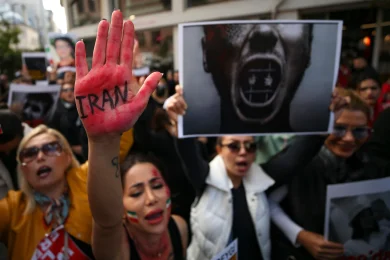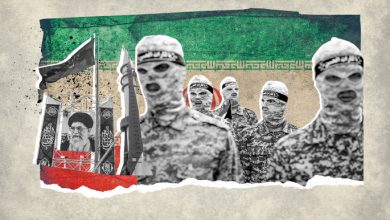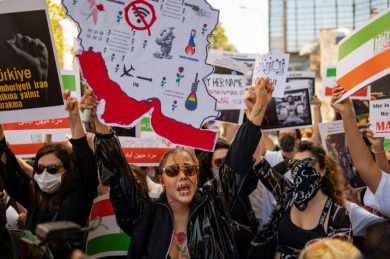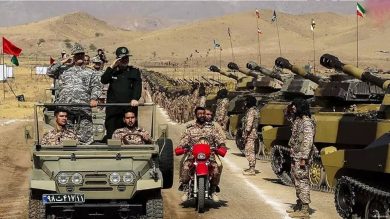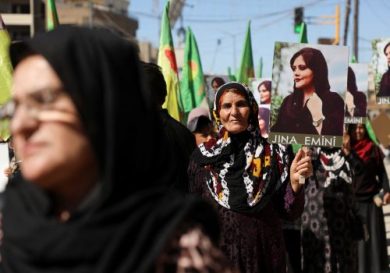The Islamic Revolutionary Guard Corps (IRGC) is not only a powerful military force but also a dominant player in Iran’s media landscape. Through censorship, propaganda, and control over information channels, the IRGC shapes narratives, suppresses dissent, and maintains its grip on power. This manipulation of information has far-reaching consequences, stifling free expression, undermining independent journalism, and distorting public discourse both within Iran and abroad.
This article explores how the IRGC controls Iran’s media, the mechanisms it uses to enforce censorship, and the hidden costs of this suppression for Iranian society and the international community.
The IRGC’s Grip on Media: Tools of Control
1. Control Over State Media
The IRGC has significant influence over Iran’s state-controlled media outlets, which act as the primary source of information for much of the population.
• Islamic Republic of Iran Broadcasting (IRIB): Iran’s state broadcaster, IRIB, is tightly controlled by the regime and heavily influenced by the IRGC. It disseminates propaganda promoting the regime’s narratives and policies while discrediting opposition voices.
• Agenda-Driven Content: News and programming are tailored to glorify the IRGC’s actions, portray the regime as a defender of Islamic values, and frame dissenters as enemies of the state.
2. Internet Censorship
The IRGC plays a pivotal role in restricting access to information online, using sophisticated tools to monitor and control digital platforms.
• Website Blocking: Thousands of websites, including independent news outlets, social media platforms, and human rights organizations, are blocked in Iran.
• Social Media Restrictions: Platforms like Twitter, Facebook, and YouTube are inaccessible without VPNs, limiting Iranians’ ability to share and access uncensored information.
• Surveillance and Monitoring: The IRGC monitors online activity to identify dissenters, often leading to arrests and imprisonment for those who criticize the regime.
3. Suppression of Independent Journalism
Independent journalists and media outlets face severe restrictions, with the IRGC employing various tactics to silence critical reporting.
• Arrests and Intimidation: Journalists who report on sensitive topics, such as corruption or human rights abuses, are frequently harassed, detained, or forced into exile.
• Media Bans: Independent publications are regularly shut down, with editors and reporters blacklisted or imprisoned.
4. Propaganda and Disinformation
The IRGC uses propaganda and disinformation campaigns to control public perception and discredit opposition movements.
• Fake News and Misinformation: The IRGC disseminates false information to confuse the public and undermine trust in independent sources.
• Framing Opposition as Foreign Agents: Protesters and activists are often labeled as pawns of foreign governments, delegitimizing their demands for change.
The Hidden Costs of Censorship
The IRGC’s control over Iran’s media landscape has profound implications for society, governance, and the global community.
1. Erosion of Public Trust
By monopolizing information and spreading propaganda, the IRGC erodes trust in public institutions and media outlets. Many Iranians are skeptical of state-run news, turning to underground and foreign sources for reliable information.
2. Suppression of Free Expression
Censorship stifles creativity, critical thinking, and public discourse. Artists, writers, and journalists who challenge the status quo are silenced, depriving society of diverse perspectives and ideas.
3. Human Rights Violations
The IRGC’s media control is directly linked to human rights abuses, as it uses censorship to conceal the regime’s actions, including crackdowns on protests and widespread surveillance.
4. Economic Consequences
Censorship stifles innovation and economic growth by limiting access to global information and technology. Entrepreneurs and businesses face challenges in a restricted digital environment.
5. Isolation from the Global Community
Iran’s media restrictions prevent its citizens from engaging with the global community, reinforcing a sense of isolation and limiting opportunities for cultural and intellectual exchange.
Global Implications of the IRGC’s Media Control
The IRGC’s manipulation of media extends beyond Iran’s borders, affecting international perceptions and policy.
1. Exporting Propaganda
Through state-funded international outlets like Press TV, the IRGC promotes its narratives to global audiences, often framing Iran as a victim of Western aggression.
2. Undermining Democracy
The IRGC uses disinformation campaigns to interfere in foreign democracies, spreading false information and amplifying divisions within societies.
3. Threatening Exiled Activists
Iranian activists and journalists abroad are often targeted by the IRGC through smear campaigns, cyberattacks, and surveillance, attempting to silence dissent on an international scale.
Resistance to Censorship
Despite the IRGC’s control, Iranians continue to find ways to resist censorship and access uncensored information.
1. Underground Journalism
Independent journalists, often working in exile, use digital platforms to report on the regime’s actions and amplify the voices of Iranian activists.
2. Digital Tools
VPNs, encrypted messaging apps, and anti-censorship software enable Iranians to bypass restrictions and communicate securely.
3. Social Media Activism
Despite restrictions, Iranians use platforms like Instagram and Telegram to organize protests, share information, and counter the regime’s narratives.
The Role of Global Advocacy
The international community has a vital role to play in countering the IRGC’s control over media and supporting freedom of expression in Iran.
1. Amplifying Independent Voices
• Support for Exiled Journalists: Provide funding and platforms for independent Iranian journalists to report on human rights abuses and censorship.
• Global Media Coverage: Ensure that the struggles of Iranian activists and journalists are highlighted in international media.
2. Promoting Digital Freedom
• Access to Technology: Supply VPNs, encrypted tools, and secure communication platforms to help Iranians bypass censorship.
• Cybersecurity Training: Protect activists and journalists from surveillance and cyberattacks.
3. Holding the IRGC Accountable
• Sanctions on Censorship Tools: Impose sanctions on IRGC-affiliated entities that facilitate censorship and propaganda.
• Diplomatic Pressure: Push for international resolutions condemning Iran’s censorship practices and media suppression.
Conclusion
The IRGC’s control over Iran’s media landscape is a cornerstone of its power, enabling it to suppress dissent, manipulate public perception, and maintain its grip on the country. However, the courage of Iranian activists and journalists, combined with global support for press freedom and digital rights, offers a path to challenge this censorship. By amplifying independent voices, promoting access to technology, and holding the regime accountable, the international community can help dismantle the IRGC’s stranglehold on information and empower Iranians to reclaim their right to free expression.
Join Our Newsletter!
Stay informed with the latest updates, news, and ways to take action in the fight for justice and global security. Sign up now to get updates delivered straight to your inbox!

